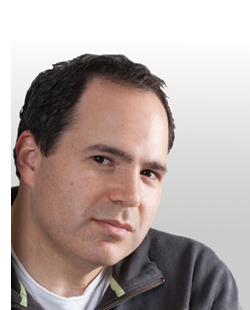
This post is adapted from content that first appeared on the blog Marketing for Scientists with the kind permission of the author.
I went to a scientific talk the other day that seemed to leave half the audience inspired and the other half frustrated. My frustrated colleagues insisted that the speaker did not present any true “results.” However, he did make some fascinating predictions about what would be discovered 10 or 20 years from now—forecasts that may be crucial for marketing exercises and expensive experiments.
Was this a good talk or a bad talk? Science or marketing?
Maybe it’s just a matter of taste. Some of us will never be satisfied by a talk unless we see a hypothesis confidently confirmed or discarded. Others may find the realm of topics subject to such clear decisions too limiting and yearn for a glimpse into the more distant future.
Still, we often argue over the quality of our colleagues’ presentations. When it is hiring time, for example, and faculty candidates are parading through your department, no doubt a common topic of conversation is who gave the best talk. And the maturity level of the research is often a contentious point.
With these conversations in mind, I’d like to suggest a numerical scale we can use to describe scientific talks. This scale is not meant to weigh the overall quality of a talk, but rather to resolve some of the tension between those who prefer solid conclusions and those who enjoy more nebulous forecasting. The first steps are about development of an idea by an individual scientist or research group; the last about the acceptance of the idea by the community.
Science Maturity Level (SML)
1. This talk presents a path that might one day lead to a testable new hypothesis or new data. An SML1 talk does not even strive to present scientific conclusions. Nonetheless, it can surprise and delight by illuminating a new research avenue that has become within arm’s reach, and it can shape the future of the field by its creativity and prescience.
2. The speaker presents a testable hypothesis with no constraining data or data whose interpretation is beyond the reach of state-of-the-art theoretical calculations. Such a talk can be boring, or it can be trendsetting, pointing the community to a fruitful direction for new work.
3. An SML 3 talk applies the full scientific method to the problem at hand, in whatever form the method is customarily used in the field. It compares a hypothesis to a data set and derives an unambiguous interpretation. However, so far the conclusion has garnered only limited attention from the scientific community, perhaps because it mainly confirms or reproduces previous work—or perhaps because it is new and thrilling.
4. This talk compares a hypothesis to a data set and appears to derive an unambiguous interpretation. Crucially, other researchers have confirmed or disputed this result in their talks and publications.
5. The speaker describes data and calculations that the community recognizes as part of its culture and history. Perhaps it describes the roots of a research paradigm that continues to spawn textbooks and doctoral theses. Perhaps it is about an old paradigm that has since been superseded. Attending such a talk can provide new insights, or it could be more about the pleasure of simply meeting a scientific celebrity.
It’s tempting to say that talks in the 1-2 range are more about marketing than science, but I’m not sure that’s the case. It seems to me that science is the process of moving from 1 to 5—and that this progress emerges from the community as a whole, not from any one scientist. So you can’t really describe a single talk as more “scientific” than another.
Also, I believe that talks at all points on the scale can be engaging and full of useful information, or dull and tiresome. The “marketing” is ultimately about whether the talk meets the needs of the audience—whether the needs are for information about the natural world or inspiration about future projects. So a talk on any research at any stage can be good or bad marketing.
Curiously, I’ve found that different scientific institutions seem to prefer different kinds of talks. Perhaps academic departments gravitate towards talks with higher SMLs, while government labs tend to prefer lower ones. Maybe that’s because government labs often focus on big projects that require lots of planning. That seems to be something to keep in mind when you are applying for jobs.
Ultimately, I think there is a place for all kinds of talks in our scientific universe. Perhaps the 4s and 5s belong at the beginning of a conference session, while the 1s, and 2s belong at the end. Talks about String Theory are often 1s, while review talks are 4s or 5s.
What do you think? Should your department focus on 1s and 2s, or 4s and 5s? Or should it aim to hire scientists who operate at both ends of the spectrum. What is the SML of your scientific talks?
Marc J. Kuchner (marc@marketingforscientists.com) is an astrophysicist at NASA, a country songwriter, and the author of the book Marketing for Scientists: How To Shine In Tough Times. His website can be found at http://www.marketingforscientists.com/.
